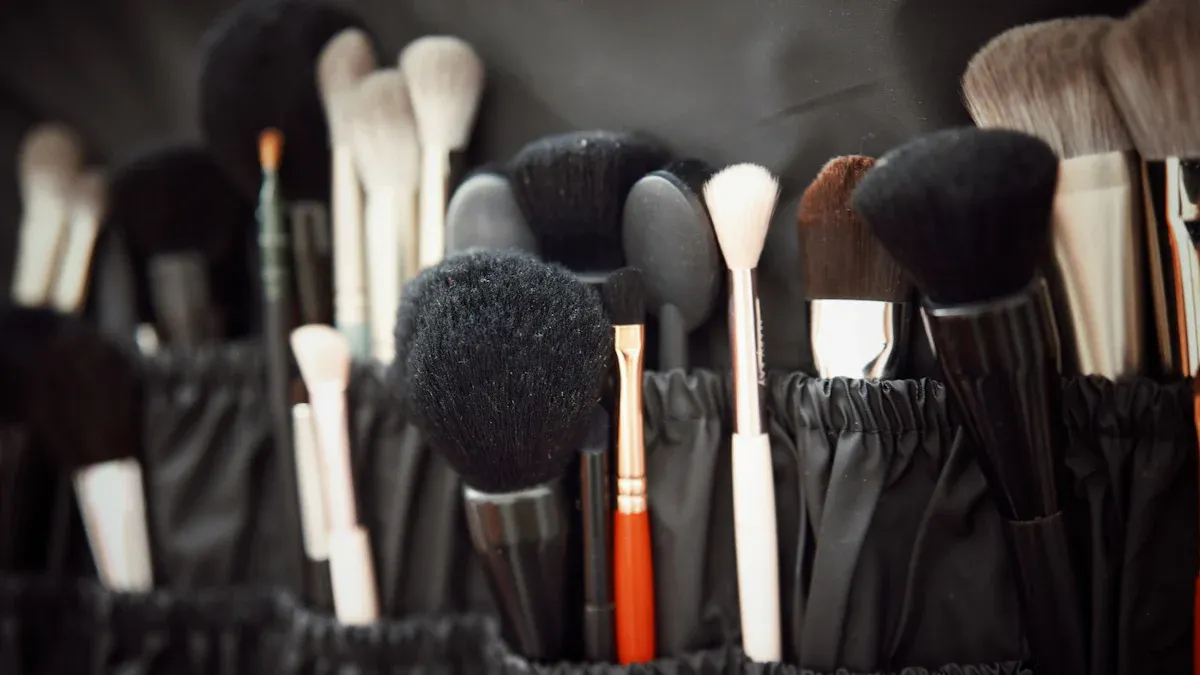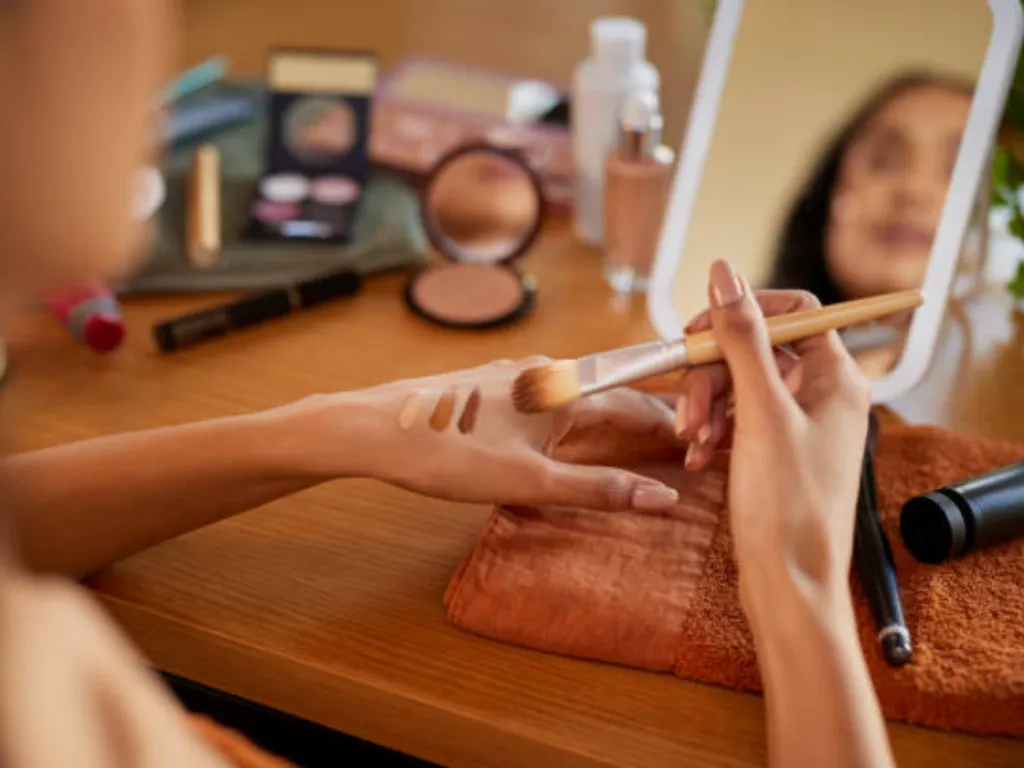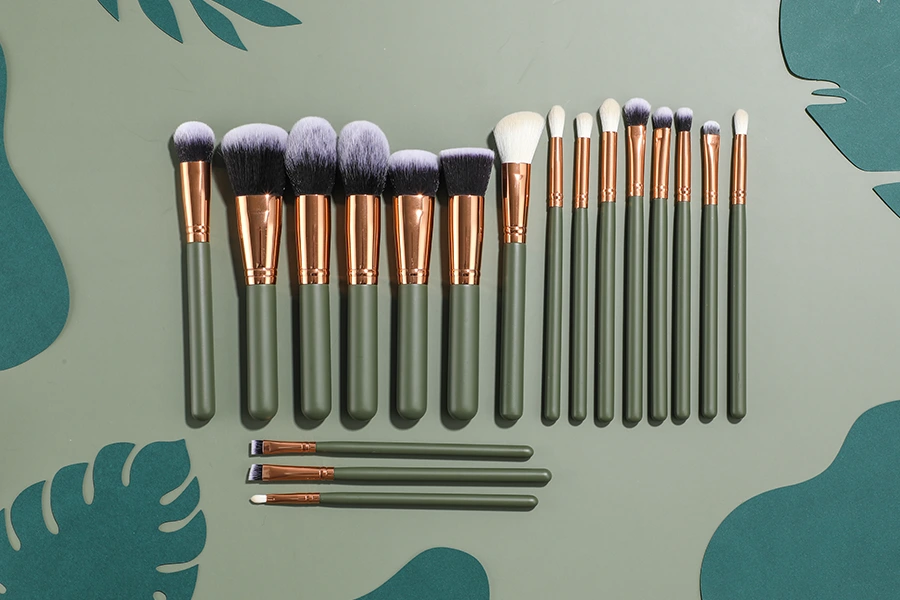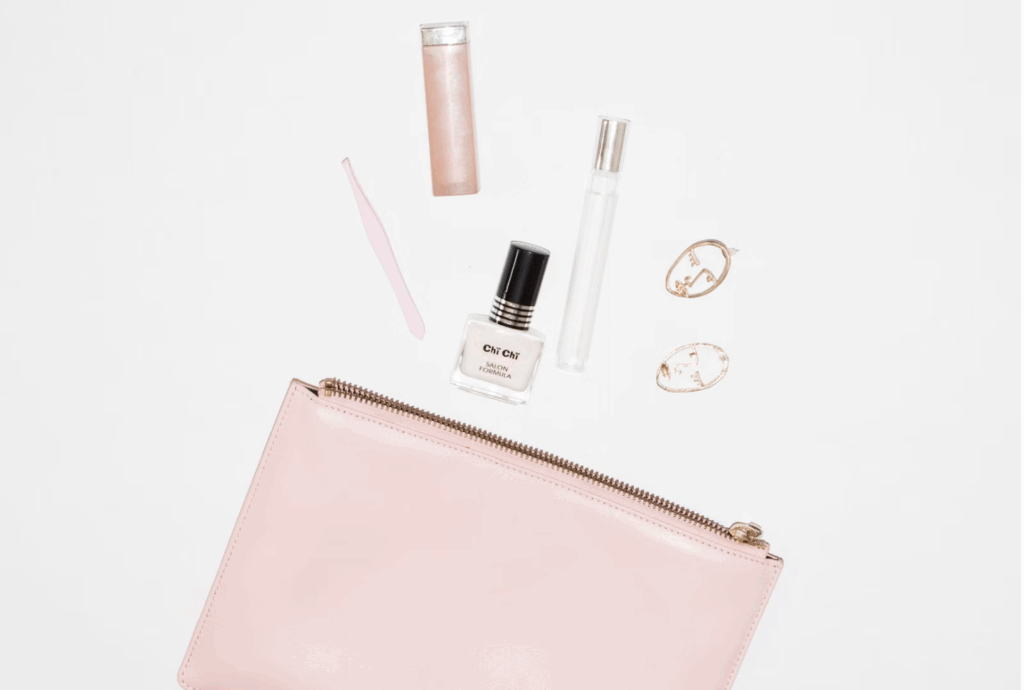
You need strong quality control to ensure every makeup brush meets high standards in 2025. Pay close attention to detail by checking for dimensional error tolerance, usually within ±1mm, and by testing bristle durability with centrifuge methods. Always use raw materials from the same batch or compare new batches for batch consistency. Regular inspections at different stages help you prevent defects and keep your makeup brushes reliable and safe. Attention to detail makes each makeup brush perform well and last longer.
Quality Control Testing and Inspection

Pre-Production Checks
You start your quality inspection process before you even make a single makeup brush. Pre-production checks help you catch problems early. You look at every part that will go into your brushes. You check the bristles for softness, length, and color. You run a ferrule inspection to make sure the metal part is smooth and free from dents. You also check the handles for cracks or rough spots.
You use an assembly inspection to see if all parts fit together well. You want the ferrule to hold the bristles tightly. You check the glue for evenness and strength. You also test the colorfastness of the handle and bristles. This means you rub them with a damp cloth to see if any color comes off. If you find any problems, you fix them before you start making the full batch.
Dica: Always compare new materials to your approved samples. This keeps your high-quality makeup brushes consistent.
Final Product Inspection
You perform a full inspection after you finish making the brushes. This step is called the final inspection. You look at every detail to make sure each brush meets your standards. You check the ferrule-handle junction for tightness. You inspect the handle finish for smooth paint and no chips. You look at the bristle alignment to see if the bristles are straight and even.
You also check for fingerprints, dust, or glue residue. You want your high-quality makeup brushes to look perfect. You run a meticulous final brush check by gently shaking the brush and pulling on the bristles. If any bristles come out, you set that brush aside. You also do a pre-packaging inspection to make sure the brush is clean and ready for the box.
You repeat the final inspection for every batch. This helps you catch any problems before the brushes reach your customers.
Performance and Safety Tests
You want your makeup brush to work well and be safe for everyone. You run performance tests to see how the brush picks up and spreads makeup. You check if the bristles blend makeup smoothly. You also test the brush for shedding by pulling on the bristles several times.
You run safety tests to make sure the brush does not cause skin irritation. You check for harmful chemicals in the bristles, ponteira, e manusear. You also do a pre-packaging inspection to make sure the brush is free from dust and safe to use. You use a product inspection to check the packaging for damage or dirt.
Observação: You should always keep records of every inspection. This helps you track quality and fix problems quickly.
You finish your inspection steps with a final inspection before shipping. This ensures every brush meets your high standards for safety and performance.
You use these steps to deliver high-quality makeup brushes every time.
Quality Assurance and Supplier Management
Supplier Audits
You need to check your suppliers often to keep your makeup brush quality high. Regular audits help you see if your suppliers follow safety, qualidade, and environmental rules. Auditors visit factories and look at how workers make the brushes. They check if the factory uses safe materials and follows good work practices. These audits use industry best practices to review safety steps, process efficiency, and how well the factory meets your standards. After each audit, you get a report with tips for improvement. This helps you work with your suppliers to fix problems and keep your quality assurance strong.
Audits do not just find problems—they help you build better relationships with your suppliers and keep your products safe.
Third-Party Inspections
You should use third-party inspection services to check your makeup brushes. These outside experts give you an honest review of your products. They test your brushes in special labs and look for problems that you might miss. Third-party inspection helps you prove to your customers and business partners that your brushes are safe and high quality. These inspections include checking raw materials, watching the production process, and testing the final product for strength and safety.
They check your supplier’s ability to make good products and look at customer feedback. They also help you set clear rules for what counts as a defect. The inspection process has three main steps:
Pre-production inspection: Checks materials before making the brushes.
During production inspection: Samples brushes while they are being made.
Final inspection: Looks at finished brushes for quality, safety, e embalagem.
Third-party inspection gives you confidence that your makeup brushes meet all standards and helps you avoid problems with customers.
You can achieve high-quality makeup brushes by following clear standards, checking materials, and inspecting every step. Consistent quality control helps you prevent defects and build trust. When you focus on continuous improvement, you see real benefits.
- Use tools like control charts and Pareto charts to track progress. Start today by reviewing your makeup brush process and setting new goals for your team.
Perguntas frequentes
What is the most important step in makeup brush quality control?
You need to set clear quality standards first. This step guides every other part of the process. When you know what to check, you can spot problems early and keep your brushes consistent.
How often should you inspect makeup brushes during production?
You should inspect brushes at every stage. Use random sampling for each batch. This helps you catch defects before they reach customers. Regular checks keep your quality high.
Why do you need third-party inspections?
Third-party inspections give you an unbiased review. These experts find issues you might miss. They help you prove your brushes meet safety and quality standards.
How do you test for bristle shedding?
You gently pull on the bristles and shake the brush. If bristles come out, you know there is a problem. This test helps you make sure your brushes last longer.
What should you do if you find a defect?
You should stop production and fix the problem right away. Record the issue and review your process. This action prevents more defects and keeps your quality control strong.


















